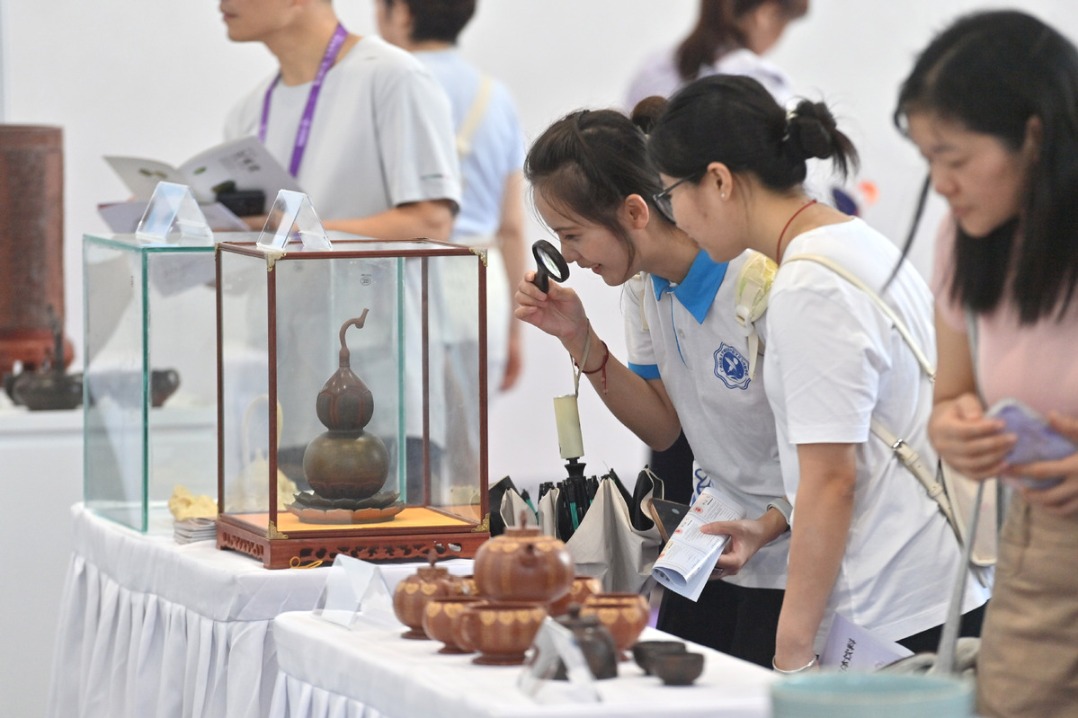Robust growth dispels myths about China's consumption


Over the past few months, China's economic indicators have shown steady, albeit modest, growth.
In the first half, GDP grew at a rate of 5 percent year-on-year, while retail sales rose 3.7 percent. Despite this, the outlook for Chinese consumption remains mixed, with some warning that the situation could worsen before it improves due to low consumer sentiment and a property slump.
However, focusing solely on these aggregate measures can be misleading. A closer, more granular look reveals a more complex reality, as highlighted in the 2024 McKinsey China Consumer Report. Here, I debunk three common myths about Chinese consumption that often surface among senior executives in the country.
One of the most prevalent misconceptions is that the Chinese economy is in crisis. While consumer sentiment remains low and the anticipated post-pandemic recovery has been slow, the overall economic picture is far from bleak. China continues to post GDP growth figures of around 5 percent, a significant number given the scale of its economy. However, this macro growth does not necessarily translate to micro-level growth, which might not be felt equally across all sectors.
Despite existing challenges, China contributed one-third of global GDP growth in 2023 and continues to show resilience in 2024.Domestic consumption, although modest, is growing. Certain sectors — like services and tourism — are experiencing robust growth, indicating that the economy is not in uniform decline, but exhibits varied performance across different sectors and regions.
Moreover, while overall product consumption might appear flat, sectors such as sportswear, urban outdoor apparel, and health and wellness have seen double-digit growth, reflecting the continued strength of these areas. It's crucial to look beyond aggregate measures and recognize the pockets of higher consumer confidence and positive growth within the market. For instance, confidence levels vary widely between millennials in larger cities and those in smaller urban areas, with some lower-tier cities showing confidence levels exceeding 80 percent.
Placing China in a global context also helps dispel the crisis myth. According to McKinsey's ConsumerWise survey, Chinese consumers are among the most confident globally. In the latest survey, 59 percent of Chinese consumers believe the economy will rebound within the next two to three months, compared to just 41 percent of US consumers, 30 percent of UK consumers, and 13 percent of Japanese consumers.
A common question arises from the luxury sector's Q2 results — why are luxury brands seeing sales decline on the Chinese mainland? It's important to remember that before the COVID-19 pandemic, Chinese consumers made 60 percent of their luxury purchases outside of the Chinese mainland. This trend is now returning, with overseas spending on luxury goods in the first half already exceeding 2019 levels, despite outbound travel activity still lagging behind.
In May, total overseas luxury spending was 32 percent higher than in 2019, followed by 22 percent growth in June. The depreciation of the Japanese yen has driven substantial increases in spending in Japan, but spending in Italy and France has also risen. This trend indicates that Chinese consumers have not lost their desire for luxury goods. They are simply choosing to make these purchases outside of the Chinese mainland. Factors such as price differentials, the experience of shopping abroad, and the allure of exclusive items not readily available domestically contribute to this behavior.
Luxury brands are responding by shifting their investments from opening new stores to increasing marketing budgets. Expansion projects have been put on hold, with fewer new stores opening in the first half compared with the same period in 2023. Concurrently, marketing activities, including offline events and art installations, have increased.
The narrative that foreign companies are rapidly pulling out of China due to a perceived decline in market opportunities is overly simplistic. While some companies have reduced their investments or exited the market, the reality is more nuanced. Some lower-performing companies have scaled back, but others, particularly from Europe, are increasing their investments in China. Germany, driven largely by the automotive industry, invested 7.3 billion euros ($7.7 billion) in China in the first half, surpassing the 6.4 billion euros invested in all of 2023.
Foreign brands continue to hold significant appeal among Chinese consumers, especially in the premium and luxury segments. The sportswear sector, for example, has seen foreign brands, including those operated by local Chinese partners, gain substantial market share post-pandemic. Amer Sports, a sportswear holding company partly owned by China's ANTA Group, recorded a 52.3 percent increase in revenue in China in the first half. Some wholly foreign-owned premium brands, such as Lululemon, have also experienced exceptional growth.
The myths of a Chinese consumption crisis, a waning appetite for luxury, and a mass exodus of foreign companies do not hold up under closer scrutiny. Instead, the reality is more complex, characterized by selective growth, continued enthusiasm for luxury goods (increasingly purchased overseas), and a mixed but still significant presence of foreign brands. Understanding these nuances is crucial for navigating or investing in the Chinese market. As the global economic landscape evolves, maintaining a balanced perspective will be key to recognizing the opportunities that still exist within China's vast and dynamic economy.
The writer is a senior partner in McKinsey's Shenzhen office and leader of McKinsey's Asia consumer and retail practice.
The views do not necessarily reflect those of China Daily.




































